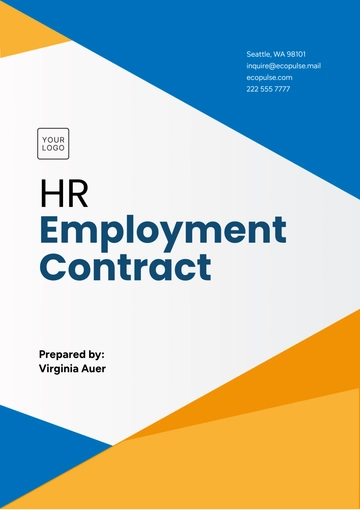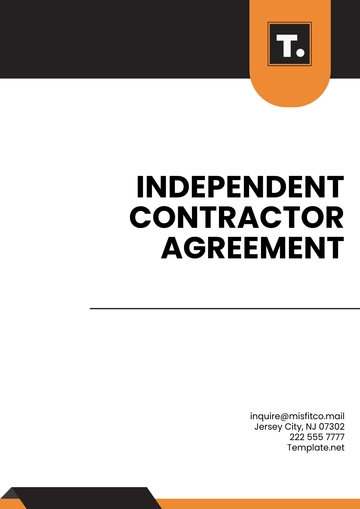Free Sales Case Study on Successful Contract Negotiations

I. Executive Summary
[Your Company Name], a renowned producer of artisanal sauces and condiments, has a rich history of crafting high-quality culinary delights. The company has consistently delivered exceptional products to customers worldwide. With a mission to elevate dining experiences, [Your Company Name] has strived for excellence in every facet of its operation.
The primary objective of [Your Company Name] was to expand its market presence and secure long-term partnerships with reputable distributors to enhance its brand's visibility and reach. Achieving sustainable growth while maintaining the highest standards of product quality remained at the core of their business goals.
A. Contract Negotiation Scenario:
[Your Company Name] engaged in contract negotiations with [Food Distributor Name], a prominent distributor specializing in gourmet and specialty foods. The negotiation centered around a partnership agreement to introduce [Your Company Name] into [Food Distributor Name]'s product portfolio.
The negotiations presented several challenges, including pricing and volume agreements, quality assurance measures, contract length, and market volatility concerns. Both parties recognized the need for strategic collaboration and flexibility to overcome these challenges and achieve a mutually beneficial agreement.
B. Key Outcomes and Benefits Achieved:
Increased Sales and Revenue: The successful contract negotiation resulted in a significant uptick in sales for both [Your Company Name] and [Food Distributor Name]. The premium products, now available through, [Food Distributor Name] became a valuable addition to the distributor's offerings, leading to increased sales and revenue for both parties.
Enhanced Product Quality: [Food Distributor Name] committed to investing in proper storage and handling facilities, ensuring the preservation of the product quality. This investment not only met the quality standards but also solidified the product’s reputation for excellence.
Long-Term Partnership: The inclusion of a periodic review clause in the contract allowed both companies to adapt to changing market conditions and maintain a thriving partnership over the years. This strategic flexibility ensured that the partnership remained mutually beneficial and dynamic.
Mutual Growth and Innovation: As a result of their successful collaboration, both companies expanded their product offerings and explored new markets together. This mutually beneficial growth paved the way for ongoing innovation and market relevance.
By addressing challenges, both parties had achieved their immediate objectives and established a strong foundation for enduring success in the food industry. This case study serves as a testament to the importance of effective contract negotiations in achieving sustainable growth and excellence in the world of culinary delights.
II. Company Background
[Your Company Name] specializes in the production of artisanal sauces and condiments. Founded by culinary enthusiasts, the company has evolved into a market leader, known for its unwavering commitment to quality, innovation, and flavor. The company’s artisanal products are crafted using time-tested recipes, premium ingredients, and a passion for culinary excellence.
A. Industry and Market Position:
[Your Company Name] focuses on gourmet and specialty food products, the company has carved a niche for itself in the market. Its products cater to discerning consumers who appreciate distinctive flavors and culinary experiences. It is widely recognized for its premium sauces, dressings, and condiments, commanding a substantial market share due to its exceptional quality and innovative product offerings. The company’s brand has become synonymous with gourmet dining, making it a sought-after choice among consumers and culinary professionals alike.
B. Key Stakeholders and Their Roles:
Company Leadership: The executive team at [Your Company Name], plays a pivotal role in shaping the company's strategic direction. They oversee all aspects of the business, including negotiations, to ensure alignment with the company's objectives and vision.
Sales and Marketing Team: The sales and marketing team, led by the Chief Sales Officer, is responsible for identifying strategic partners. They drive market expansion efforts, promotional activities, and negotiation strategies to increase market penetration.
Product Development and Quality Assurance Teams: These teams are responsible for ensuring the continuous innovation and exceptional quality of the products. They collaborate closely with the negotiation team to communicate product quality standards and requirements to potential partners.
Legal Counsel: Legal experts represent [Your Company Name]'s interests during negotiations. They ensure that all terms and conditions are legally sound and aligned with the company's best interests.
III. Contract Negotiation
Setting clear and measurable objectives before entering into contract negotiations is essential for achieving a successful outcome. [Your Company Name]'s negotiation team established the following specific goals to guide the process:
Cost Reduction and Pricing Structure: One of the primary objectives was to negotiate a pricing structure that ensures competitive prices for [Your Company Name]'s products. The goal was to reduce production and distribution costs wherever possible while maintaining profitability.
Measurable Outcome: Achieve a pricing structure that reduces product acquisition costs by at least 10% compared to previous distribution agreements.
Risk Mitigation and Quality Assurance: Ensuring the preservation of product quality throughout the distribution process was of utmost importance. The product aimed to implement robust quality assurance measures to minimize the risk of product degradation or damage during storage and distribution.
Measurable Outcome: Develop and incorporate quality assurance protocols that reduce product quality-related issues by 20% within the first year of the contract.
Market Expansion and Increased Sales: The negotiation team sought to leverage [Food Distributor Name]'s extensive network to expand the product’s market reach. The goal was to increase product sales by tapping into new markets and customer segments.
Measurable Outcome: Achieve a 15% increase in sales volume within the first year of the contract, primarily attributed to the partnership with [Food Distributor Name].
IV. Negotiation Process
Pre-Negotiation Preparation
Objective Setting: The [Your Company Name] negotiation team began by defining clear and measurable objectives for the negotiation, as detailed in the previous response.
Market Research: Comprehensive market research was conducted to understand [Food Distributor Name]' customer base, distribution network, and market dynamics.
Legal Assessment: Legal counsel reviewed [Your Company Name]'s existing contracts and ensured that the negotiation team was well-versed in relevant laws and regulations.
Initial Discussions
Engagement: [Your Company Name] initiated contact with [Food Distributor Name], expressing interest in exploring a potential partnership. Both parties agreed to initial discussions to assess compatibility.
Transparency: [Your Company Name] openly shared its goals, objectives, and market research findings with [Food Distributor Name] to establish trust and transparency from the outset.
Exploratory Meetings
Face-to-Face Meetings: Key stakeholders from both companies met in person to discuss the partnership's potential. These meetings allowed for in-depth discussions and relationship building.
Pricing and Volume: Initial discussions focused on pricing structures and volume commitments, with both parties presenting their proposals.
Negotiation Tactics and Strategies
Collaborative Pricing Model: A tiered pricing model was proposed, linking pricing discounts to increasing order volumes. This encouraged larger orders while maintaining profitability for both parties.
Quality Assurance Measures: [Your Company Name] highlighted its commitment to product quality and offered to invest in proper storage and handling facilities to ensure premium product preservation.
Contract Length Flexibility: To address [Food Distributor Name]'s concerns about market volatility, a periodic review clause was included, allowing for adjustments to pricing and terms.
Process Timeline Overview
The process timeline is summarized in the table below:
Process | Timeline |
|---|---|
Pre-negotiation Preparation | Weeks 1-2 |
Initial Discussions | Weeks 3-4 |
Exploratory Meetings | Weeks 5-8 |
Negotiation Tactics and Strategies | Weeks 9-12 |
V. Key Success Factors
Effective Communication and Transparency: Open and transparent communication from the outset of negotiations set a positive tone. [Your Company Name] shared its objectives, market research, and pricing expectations with [Food Distributor Name], fostering trust and a shared understanding of mutual goals.
Collaborative Pricing Model: The introduction of a tiered pricing model was a pivotal factor. This creative approach allowed for cost reduction for [Food Distributor Name] through larger orders while ensuring profitability for [Your Company Name]. It demonstrated a willingness to work together to achieve a mutually beneficial outcome.
Quality Assurance Commitment: [Your Company Name]'s commitment to investing in proper storage and handling facilities to maintain product quality was a persuasive factor. [Food Distributor Name] appreciated the dedication to quality, which alleviated concerns about product degradation and damage during distribution.
Flexibility in Contract Terms: The inclusion of a periodic review clause provided both parties with flexibility and adaptability in a dynamic market. This factor addressed [Food Distributor Name]'s concerns about market volatility and ensured that the partnership remained mutually beneficial over time.
Legal Collaboration: Collaboration between legal teams from both companies ensured that all contract terms were legally sound and aligned with negotiated agreements. This factor minimized the risk of legal disputes and contributed to a smooth contract finalization.
VI. Relationship Building
The negotiation process between [Your Company Name] and [Food Distributor Name] was an opportunity to build a positive and enduring relationship. Several strategies were employed to foster trust and cooperation throughout the negotiations:
Early Disclosure of Objectives: [Your Company Name] openly shared its objectives and long-term vision with [Food Distributor Name]. This transparency helped [Food Distributor Name] understand [Your Company Name]'s motivations and aspirations.
Active Listening: Both parties actively listened to each other's concerns and priorities. This not only allowed for better problem-solving but also demonstrated a genuine interest in each other's needs.
Creative Problem-Solving: The introduction of a tiered pricing model was a creative solution that demonstrated a willingness to innovate and accommodate each other's needs.
Building Personal Rapport: Face-to-Face Meetings: In-person meetings between key stakeholders allowed for relationship building beyond the negotiation table. It humanized the process and created a personal connection.
VII. Solutions
The final contract between [Your Company Name] and [Food Distributor Name] was a testament to successful negotiation and the pursuit of mutually beneficial outcomes. It reflected a collaborative spirit and creative problem-solving, with both parties making concessions to achieve their goals. Here are some key elements of the solutions:
Tiered Pricing Model:
[Food Distributor Name] could secure lower unit prices by committing to larger order volumes, allowing for improved profit margins.
[Your Company Name] received consistent orders, increased sales, and long-term commitment from [Food Distributor Name], helping maintain revenue and supply chain stability.
Quality Assurance Investment:
[Food Distributor Name] gained confidence in the quality of the products due to [Your Company Name] 's investment in proper storage and handling facilities.
Maintaining product quality reinforced [Your Company Name]'s reputation for excellence and ensured customer satisfaction, ultimately driving sales.
Periodic Review Clause:
[Food Distributor Name] had the flexibility to adapt to market changes without being locked into rigid terms, mitigating the risk of financial loss during market fluctuations.
[Your Company Name] had a guaranteed distribution partner and could adjust pricing and terms to remain competitive in the changing market landscape.
Legal and Regulatory Compliance:
Compliance with legal and regulatory standards reduced the risk of legal disputes, ensuring a stable partnership.
Compliance upheld [Your Company Name]'s commitment to quality and safety, which was crucial for brand integrity and customer trust.
Customer-Centric Focus:
[Food Distributor Name] could provide high-quality products from [Your Company Name] to its customers, enhancing its reputation and customer loyalty.
[Your Company Name]'s products consistently met or exceeded customer expectations, leading to increased sales and brand loyalty.
VIII. Conclusion
The contract negotiations between [Your Company Name] and [Food Distributor Name] were a resounding success, yielding substantial benefits for both parties and reinforcing their positions in the competitive food industry. The impact of this partnership on the company's strategic goals and bottom line has been profound.
The negotiations were characterized by open communication, collaboration, and a shared commitment to mutually beneficial outcomes. These elements were instrumental in achieving the following strategic successes:
Market Expansion: The partnership with [Food Distributor Name] allowed [Your Company Name] to expand its market reach significantly. With access to [Food Distributor Name]'s extensive distribution network, [Your Company Name] penetrated new markets and reached a broader customer base, contributing to strategic growth.
Increased Sales and Revenue: The introduction of [Your Company Name]'s premium products into [Food Distributor Name]'s portfolio led to a substantial increase in sales and revenue for both companies. The tiered pricing model encouraged larger orders, further enhancing profitability.
Brand Enhancement: The commitment to quality assurance and investment in storage and handling facilities strengthened [Your Company Name]'s brand reputation. Customers associated [Your Company Name]'s products with consistent excellence, reinforcing its position as a premium brand.
Long-Term Sustainability: The inclusion of a periodic review clause ensured that the partnership remained adaptable to changing market conditions. This strategic flexibility promoted long-term sustainability, benefiting both parties.
This partnership not only achieved the strategic goals of market expansion, revenue growth, and brand enhancement but also solidified [Your Company Name]'s position as a leader in the gourmet and specialty foods sector. With a commitment to quality, collaboration, and innovation, the partnership continues to thrive, delivering value to both parties and demonstrating the power of effective negotiation in achieving long-term business success.
- 100% Customizable, free editor
- Access 1 Million+ Templates, photo’s & graphics
- Download or share as a template
- Click and replace photos, graphics, text, backgrounds
- Resize, crop, AI write & more
- Access advanced editor
Explore our Sales Case Study Template highlighting the art of Successful Contract Negotiations. Dive into the details of a real-world contract negotiation between two companies, revealing the strategies, challenges, and win-win solutions that paved the way for a thriving partnership. Learn the secrets to negotiating success with our editable template, exclusively customizable via Template.net's AI Editor Tool.
You may also like
- Rental Contract
- Contractor Contract
- Contract Agreement
- One Page Contract
- School Contract
- Social Media Contract
- Service Contract
- Business Contract
- Restaurant Contract
- Marketing Contract
- Real Estate Contract
- IT Contract
- Cleaning Contract
- Property Contract
- Supplier Contract
- Partnership Contract
- Food Business Contract
- Construction Contract
- Employment Contract
- Investment Contract
- Project Contract
- Payment Contract
- Student Contract
- Travel Agency Contract
- Startup Contract
- Annual Maintenance Contract
- Employee Contract
- Gym Contract
- Event Planning Contract
- Personal Contract
- Nursing Home Contract
- Law Firm Contract
- Work from Home Contract
- Software Development Contract
- Maintenance Contract
- Music Contract
- Amendment Contract
- Band Contract
- DJ Contract
- University Contract
- Salon Contract
- Renovation Contract
- Photography Contract
- Lawn Care Contract





























